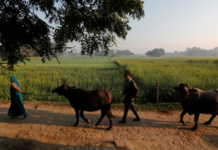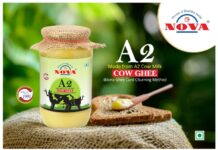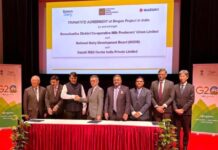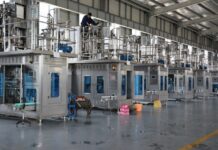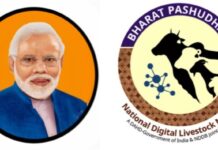New Delhi, October 21, 2021: My first book looked at capitalist enterprise in India, specifically from the standpoint of the social base of the country’s business class and its expansion beyond traditional Vaishya mercantile communities. Since its publication in 2008, I was keen to do more detailed case studies or the micro-histories of individual entrepreneurs from diverse community and regional backgrounds. I had even begun work on a business biography of the founder of India’s third largest industrial house at the time of Independence. But in the meantime, R.G. Chandramogan approached me to ‘document’ the journey of Hatsun Agro Product, the company he originally started as a partnership firm in 1970. Our conversation happened around early-August 2016.
There were many reasons why it didn’t take me long to say yes. Foremost among them, of course, was my background as an agriculture writer and Hatsun being India’s largest private dairy company. Chandramogan also caught my interest as a ‘new capitalist’—a regional entrepreneur from a non-mainstream business community. But what made his company really worth documenting was its organic growth that traversed every potential stage of a business enterprise—from tiny to small, medium, big and, finally, large. And all through, Chandramogan has stuck to his knitting, starting with ice cream and then becoming an integrated dairy player, while not pursuing the usual ‘conglomerate diversification’ strategy of getting into unrelated businesses, be it real estate, infrastructure, finance or education.
R.G. Chandramogan
In 1970, when I started off as an ice candy manufacturer with a capital of Rs 13,000, three employees and fifteen pushcarts, there were probably 40,000 others all over India—3,000 in Tamil Nadu and 350 in Chennai—doing this business. My choice of industry at that point was guided not by any romantic entrepreneurial zeal, but the sheer need for survival. Mine was a cottage industry where everybody was a dwarf and largely stayed so—like bonsai trees, but not as beautiful.
I had the urge to grow, but was constrained by money, and had nobody to guide me or act as a torchbearer. I did manage to graduate from an ordinary stick-and-cup ice-candy to a genuine milk-based ice cream maker offering a range of varieties. However, my turnover in 1981 was just Rs 4.25 lakh. That was when I discovered my break-out formula. Those days the big ice cream brands focused only on city markets—in this case, Madras, as Chennai was then called. I decided to explore a new market that lay in the towns and urban centres outside of Chennai. It was an underserved market having several ice-candy but no good ice cream brands. Nobody had tapped into this aspirational consumer segment. We created an outstation market for ice cream and a new franchisee model of sit-and-eat parlours without our realizing it! By 1986, ‘Arun’ had become the market leader, not only in Tamil Nadu outside Chennai, but even in the capital city.
In July 1995, I ventured into liquid milk marketing. The underlying motivation, again, was survival. My annual sales from ice cream had by then reached Rs 11 crore. But I had invested in a Rs 2-crore plant for manufacturing instant milkshake powder, inspired by ‘Rasna’, the popular soft drink concentrate brand. My product bombed badly; its monthly losses of Rs 4–4.5 lakh were being funded through interest-free loans from the ice cream company. Around this time, I was advised by well-wishers to sell even my profitable ice cream business to Hindustan Lever, which had been acquiring one local brand after another. It was a tough choice between exiting and surviving.
Dairy, like ice cream, wasn’t a sunrise industry. My entry, too, was only to recoup losses from a disastrous investment. Liquid milk sale was, moreover, a cooperative monopoly. Every state had a local cooperative that enjoyed government patronage and could run losses supposedly in public interest. That luxury wasn’t available to entrepreneurs investing hard-earned capital according to the reports published in theprint.in.
The one lesson that I had learnt from ‘Arun’ ice cream was to take the untravelled road: my product, even if it was just milk, had to be different from my competitor’s. The cooperatives mostly sold ‘toned’ milk containing 3 per cent fat and 8.5 per cent solids- not-fat (SNF). Rather than selling the same product at a lower price, I made a call to market only standardized cow milk with 4.5 per cent fat and 8.5 per cent SNF. My ‘Arokya’ milk would further be homogenized for better texture and uniform consistency. And like with ‘Arun,’ I promoted sales of ‘Arokya’—as ‘naalarai paal’ or 4.5 per cent fat milk—in Chennai as well as the big and small towns across Tamil Nadu. At the start of the century, my company, Hatsun Agro, was South India’s biggest ice cream and private sector liquid milk player.
Today, when Hatsun has grown to a Rs 5,500 crore-plus turnover company and India’s largest private dairy enterprise, I can list three major factors behind our success.
The first is being a change initiator and product differentiator. Ours wasn’t a ‘new’ industry like IT, airlines, telecom or satellite television. Yet, that didn’t stop us from doing new things even here, be it identifying and developing markets not on others’ radar or creating niche products. ‘Naalarai paal’ apart, we were the first to recognize the market potential of packed curd. Our target consumer was the working woman who had no time to set curd at home from milk. Curd is now my company’s second highest revenue source—after milk and on par with ice cream!
The second is thrift and being focused on our business. I did embark upon a few misadventures and unrelated activities but exited in time and ensured these didn’t affect my core ice cream and dairy operations. The profits from the latter were reinvested in their growth and never diverted towards accumulating land, gold and other personal assets. I take pride in staying in rented accommodations and not moving into my own home at Chennai until June 2000. No one can teach single-minded focus and commitment (in my case, to my business) better than Roger Federer. About ten years ago—this was at an exhibition tournament in Abu Dhabi, and I was there to watch my all-time favourite—the tennis legend was asked by a young boy what it would take to become the next Federer. Sacrifice was the answer he got. Federer told the lad that as a Swiss, he loved mountain- climbing but generally refrained from it as any injury could hamper his tennis career. Simply put, achieving excellence in any field demands sacrifice.
The third factor has been creating economic moats to gain competitive advantage and market share. We were never thrifty with regard to brand-building and investing in infrastructure, even if it meant borrowing from banks and our debt-equity ratio almost reaching 6:1 at one point. But all this risk-taking, to repeat, was for expansion within and not in unrelated businesses. Many of these investments—whether in procuring milk directly from farmers bypassing intermediaries, spending over Rs 100 crore every year on advertising and sales promotion or developing independent distribution franchisee networks—have taken time to yield returns. I believe we are at an inflexion point where these returns are really beginning to show. It is personally a great feeling that Hatsun Agro today directly touches the lives of some 4 lakh farmers, besides another 50,000 employees and trade associates. Two persons I would specifically credit for the company’s growth, behind the actual execution of our business strategy from the mid- nineties, are K.S. Thanarajan and C. Sathyan.
A fourth factor, no less significant and in addition to the above three, is my grandmother Meenammal. Behind every successful person is a spiritual anchor, someone who always inspires and believes in you. Meenammal mamamma had faith in my future even when all others had given up. She has been my friend, philosopher and guide in good and bad times.
Last but not least, I am thankful to Harish Damodaran, who understands and writes on agriculture better than most in the country, for documenting the journey of Hatsun from its very start. His meticulous attention to detail prodded me to go back in time and recall people, things and events that were hidden in the deepest recesses of my mind. Without him, it would have been impossible to cover this voyage, which has had its share of failures and blunders as much as successes and accomplishments. I hope that Hatsun’s story conveys to budding entrepreneurs the one lesson life has taught me: never lose heart and look for breakthroughs even when near broke.
This excerpt from ‘Broke to Breakthrough: The Rise of India’s Largest Private Dairy Company’ has been published with permission from Penguin Random House India.



